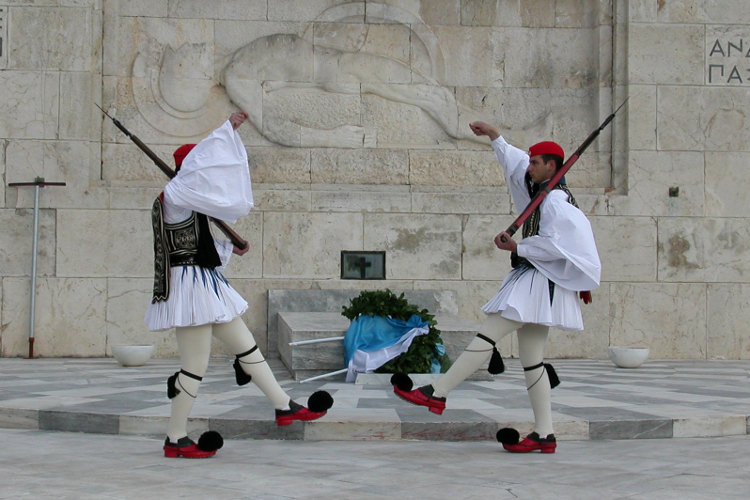
In front of the Parliament building on Plateia Syntagmatos (or Syntagma Square, meaning Constitution Square), you’ll know the traditionally costumed evzones (guards) by their short kilts and pom-pom shoes based on the attire worn by the klephts (the mountain fighters during the War of Independence). They stand guard at the Tomb of the Unknown Soldier and enact a high-kicking ritual when they change every hour on the hour. On Sunday at 11am, a whole platoon marches down Leoforos Vasilissis Sofias to the tomb, accompanied by a band.
Broad Syntagma Square itself is great for people-watching. Wander downhill from the Parliament, with the historic Grand Bretagne hotel on your right, and find a seat on one of the square’s park benches to watch the world go by…this major pedestrian crossroads is also the site of one of Athens’ busiest metro stations. At Christmas, it’s topped by a giant Christmas tree – a popular photo-op stop for locals.

Smack in the middle of the city centre, Athens’ National Gardens are a delightful, shady refuge during summer. They sit just behind the Parliament (though you can enter from all sides) and were formerly the royal gardens designed by Queen Amalia. Long avenues of palms lead to plantings of orange trees and ornamentals; there’s also a large children’s playground and a shady cafe. Bring breadcrumbs for the ducks at the pond, or look for the turtles in the small marble fountain in the adjacent Zappeio Gardens.
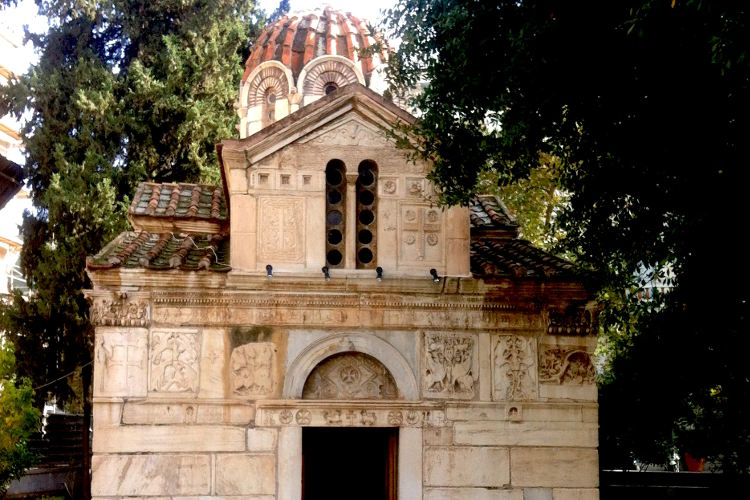
Most of Athens’ uber-famous ancient sights, such as the Acropolis and Ancient Agora, are accessible on a €12 joint ticket, but there are plenty of others that can be seen for free. And, of course, you can gaze at the Acropolis from all over town, sans ticket. Hadrian’s Arch, Temple of Olympian Zeus and the Panathenaic Stadium are also easy to observe as you wander the streets.
Lesser-known ruins literally emerge from the landscape across Athens. The Roman Baths were excavated during the metro build, and are marked by placards alongside the National Gardens. At Syntagma metro station, the dig turned up an ancient aqueduct and other artefacts which are now on display at the station. Monastiraki metro station also has a signed archaeological dig.
After years of excavation, in 2014 Aristotle’s Lyceum opened to the public – totally free. Discovered in 1996, it’s the site where, 2500 years ago, the venerable philosopher taught. Find it in a small park between the Byzantine & Christian Museum and the Athens Conservatory.
In Plaka, you can peek at historic Turkish Baths inside the gift shop of the Museum of Greek Popular Instruments. And all over town Byzantine churches abound, giving a glimpse into the heart of long-gone Byzantium.
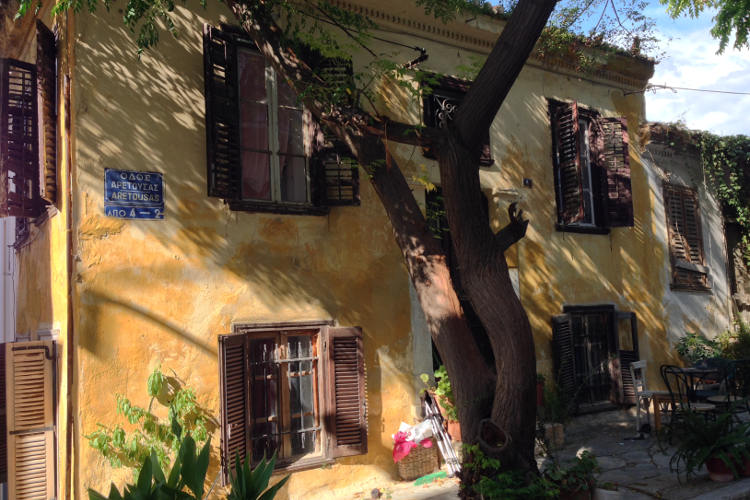
One of the easiest ways to soak up the feel of the city while partaking of ancient sights and modern life, is to stroll the historic city centre. Start with the old Turkish quarter in Plaka. Virtually all that existed when Athens became the capital of Greece, its narrow streets nestle into the northeastern slope of the Acropolis. Once you emerge from the hillside, the neighborhood becomes touristy in the extreme, but it is still the most character-filled part of Athens.
Next, find Dionysiou Areopagitou which partially rings the Acropolis, near the Acropolis Museum. Follow it by Filopappou Hill (also worth exploring) as it loops into Thisio, with many Acropolis-facing cafes, before letting you out near the Monastiraki area. You can wander through Monastiraki’s atmospheric flea market and busy Plateia Monastirakiou (Monastiraki Square) before you complete the loop by passing the Ancient and Roman Agora – some of which you can peep from the street.
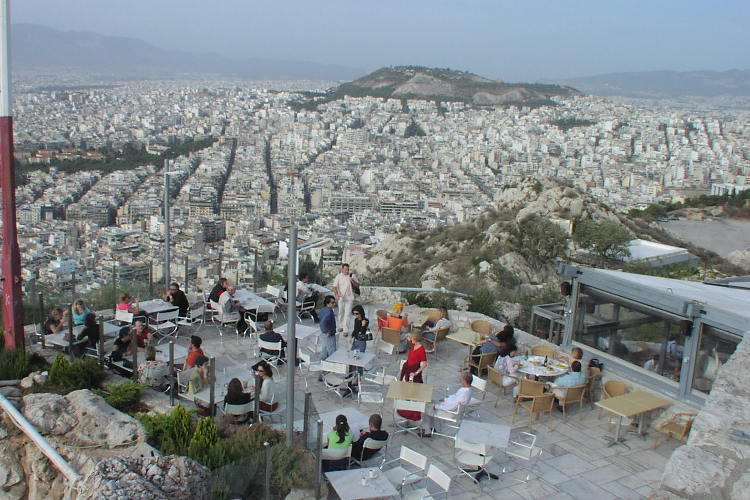
For a great, free workout and astounding views, climb one of Athens’ central hills.
Filopappou Hill – along with the adjacent Hills of the Pnyx and Nymphs – was, according to Plutarch, where Theseus and the Amazons did battle. Inhabited from prehistoric times to the post-Byzantine era, today the pine-clad slopes lead up to excellent views of Attica and the Saronic Gulf and some of the very best vantage points for photographing the Acropolis.
As you approach the hill, don’t miss the excellent Church of Agios Dimitrios Loumbardiaris (which contains fine frescoes) at its foot, before continuing past Socrates’ prison (he probably was not actually held captive here) and the Shrine of the Muses.
On the hilltop, the Monument of Filopappos was built between AD 114 and 116 in honour of Julius Antiochus Filopappos, a prominent Roman consul and administrator. The whole hill is crisscrossed with the remains of ancient bastions.
Athens’ other great central hill, Lykavittos means ‘Hill of Wolves’, and indeed in ancient times it was inhabited by wolves. Today, a path leads to the summit from the top of Loukianou Street for fine panoramas of the city and the Attic basin. Perched on the summit, the little Chapel of Agios Georgios is floodlit like a beacon over Athens every night. Alternatively, you can catch the funicular railway (teleferik) from the top of Ploutarhou Street in Kolonaki, but it will cost you a couple of euros.
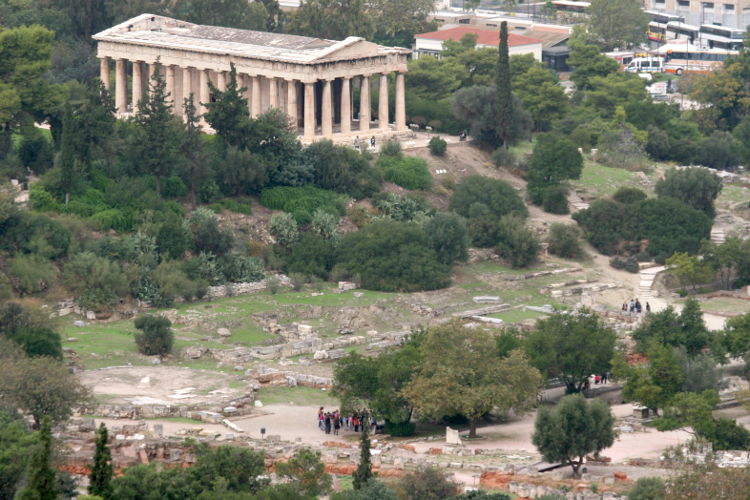
Archaeological sites, such as the Temple of Olympian Zeus, Ancient Agora, Roman Agora and Keramikos are not only included in the €12 joint Acropolis ticket, but are free every first Sunday between November and March, and are always free for those under 18 (with ID). The free-admission rules also apply to the excellent National Archaeological Museum.
Benaki Museum’s top-notch main building (not the annexes), one of the country’s best cultural museums, is free on Thursdays. But there’s lots more to see – and the following museums are always free:
Kanellopoulos Museum A wonderful cultural museum in a historic mansion in the foothills of Plaka.
Museum of Greek Popular Instruments Displays and recordings of traditional instruments and costumes.
Epigraphical Museum The most significant collection of Greek inscriptions on a veritable library of stone tablets.
Centre of Folk Art & Tradition A stunning Plaka mansion with interesting periodic exhibitions.
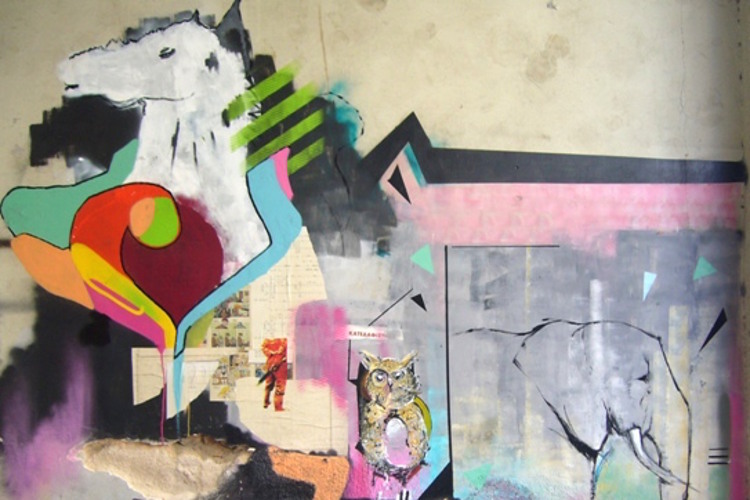
Modern art in the form of outlandish, creative and highly skilled graffiti is a part of Athenian street life – keep an eye out for it as you stroll. But you can also enjoy the vibrant contemporary art scene at Athens’ numerous galleries. Download a list of galleries and art spaces from Athens Art Map; some top spots include:
A.antonopoulou.art Installations, video art and photography by emerging Greek artists in a converted warehouse.
Qbox Gallery Young, emerging local and visiting artists on the international scene.
CAN Gallery Chic Kolonaki neighborhood's newest gallery for contemporary art.
Medusa Art Gallery Excellent Greek contemporary painting, sculpture, installations and photography.
Taf Exhibitions, bar-cafe, cinema and theatre in an interesting, crumbling historic building.
Six DOGS Gregarious and central – bar, cafe, music venue and theatre.
Bios Industrial chic with a cinema, gallery, bar and more.